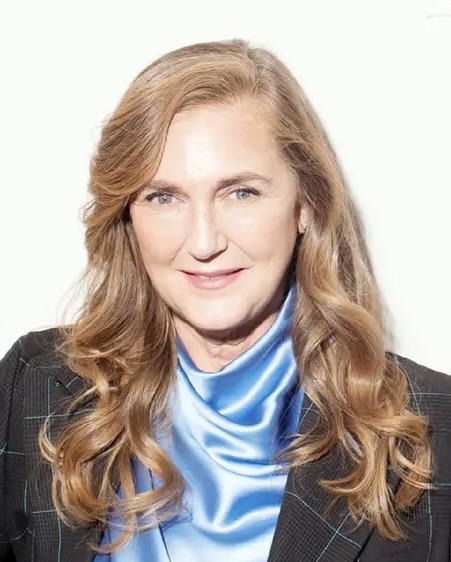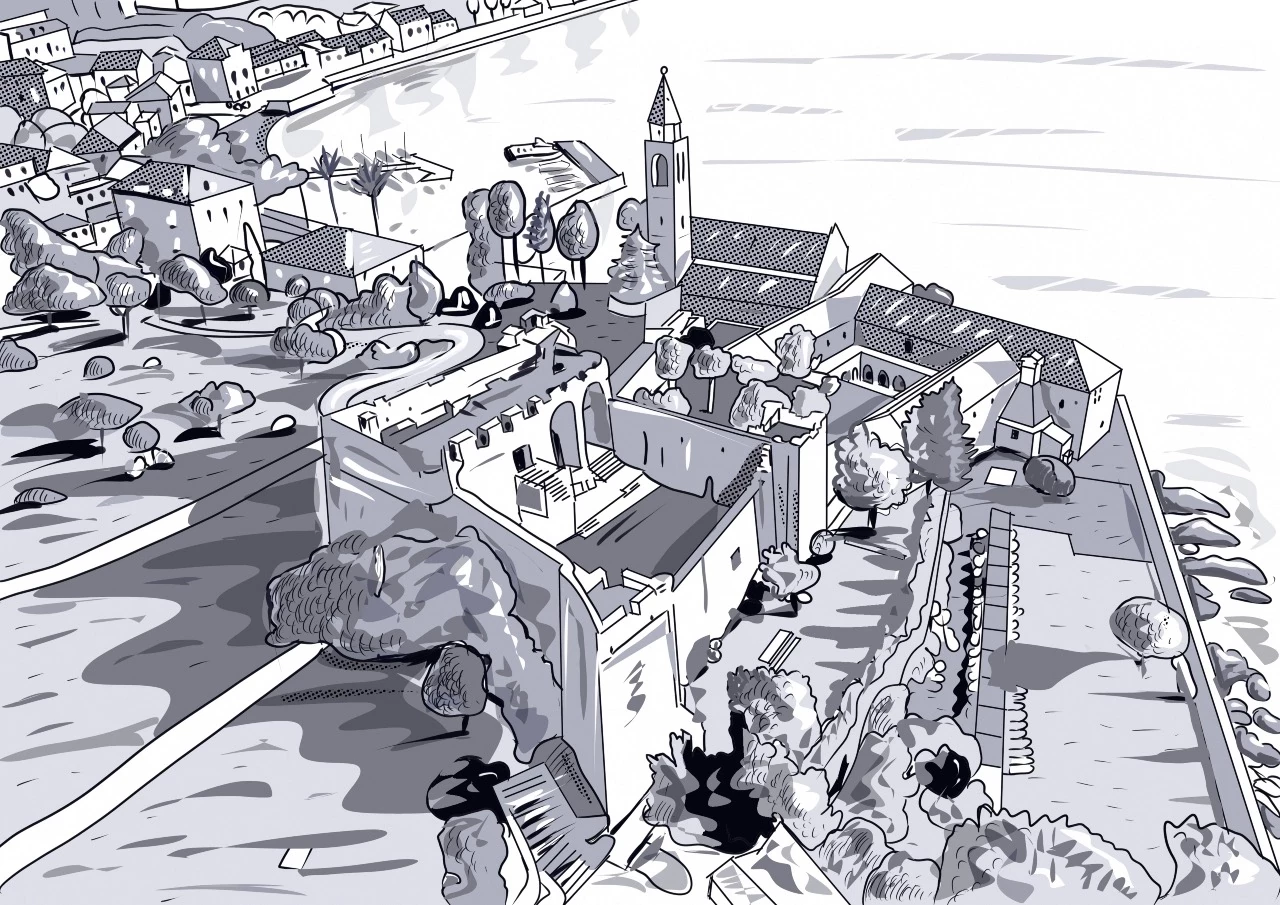A Tale Of Renaissance, Revival And Croatia
How To Weave Art, Botany And Family Into A Historical Narrative.


I HAVE, OVER THE LAST TWO DECADES, organized many gatherings called the Lopud Seminars, where I brought together artists, conservationists, anthropologists, architects, and museum professionals from all over the world to debate and challenge our respective programs for the upcoming years. It became an intellectual exercise to remain pioneers in generating art that gave context and meaning to some of the biggest and most challenging issues of our time. We live in a period where peace is fragile, and even peace with nature seems lost, so, as practitioners of art, we felt that we could contribute towards something positive.
I first came to Croatia in 2001 at the very beginning of the war, alongside my old school friend and fellow Monegasque, Nick Danziger, a veteran war journalist with extensive experience in Afghanistan. At this time, we were witnessing the collapse of the Soviet Union and the fall of Communism in Eastern Europe. It represented the greatest geopolitical shift I ever expected to experience in my lifetime, as it represented hope for a democratically enlarged Europe. However, conflict suddenly erupted in former Yugoslavia at that moment and added a whole new dimension to the unstable political landscape. After visiting the trenches and several front-line positions with Nick, it became quite clear to me that this war was not only about gaining territorial advantage but also controlling the cultural narrative. We are seeing this pattern repeat itself in Ukraine today.
At the end of 2001, my then-fiancé, Karl Habsburg-Lothringen, and I organized the “Art at War” conference in Zagreb alongside the newly-founded Croatian Ministry of Culture. The destruction of vast amounts of heritage led us to work with EU monitors to register damaged or looted cultural and religious spaces throughout the occupied territories and, most importantly, to establish a conservation laboratory in Dubrovnik in the Franciscan Monastery. Having traveled by land and sea to the beautiful city of Dubrovnik after its year-long siege, which ended in November 1992, I witnessed the devastation firsthand—a Renaissance city blackened by bombs and mortars, with targeted churches that were still smoldering.
My introduction to the monastery in Lopud a few years later was facilitated by Father Pio Mario and was like discovering a hidden treasure. The journey to the island on a small fishing boat took two hours. Lopud was once a thriving shipbuilding island, in what was an extremely wealthy island just off Dubrovnik, as it was situated towards the end of the Venetian Silk Road. The Dalmatians crossed swords with the Ottoman Empire, and at the same time, attracted many pirates, which is why this unique monastery was so well protected. As we came around the corner, Lopud revealed a small village dotted with Renaissance buildings, a serene harbor, and the scars of Croatia’s war, which had left many structures in a state of neglect. As we entered the monastery itself, with its collapsed roof and walls decorated with faded peach plaster, it felt almost like a ghost of its vibrant past. Moss and weeds whispered tales of abandonment, while layers of history competed for attention in every nook and cranny. Yet the walls spoke to me.
As I am a passionate conservator, this dilapidated structure was a canvas demanding careful restoration. I wondered about its many mysteries: the original lookout tower turned smoking oven, the oversized water cistern, a medieval pharmacy, an underground passage to the sea, historical gardens, and the cloister’s blackened stones. Layered with tales of creation, adaptation, and survival, these elements formed the soul of Lopud 1483. Over 25 years, these layers of history were meticulously preserved. A huge focus was to keep as much of its original patina in order to maintain an authentic atmosphere within these great walls. I felt that my responsibility had become to find new meaning and purpose for such a wonderful place and then share it with the world.
Inside, the decoration was tuned between antique treasures from my grandfather’s collections of Gothic and Renaissance furniture and objets de vertu, with the contemporary designs of Paula Lenti. Old Masters from my father’s collection are juxtaposed with masterpieces of my contemporary art foundation, TBA21. Perched atop lush terraced gardens maintained by dedicated gardeners, the monastery has a long pergola, heavy with vines, which guides visitors to a secluded cove with access to a private beach, while on the terraces above, a meditation garden designed by Arctic shaman Asa Anderson invites contemplation. The garden’s nine sacred spots characterize attributes we aspire towards. There is also a medicinal garden filled with healing herbs that pay homage to the Franciscan monks who were renowned for their healing knowledge since medieval times. I have just organized a wellness retreat there for some friends, curated by my dear friend Ioana Rucareanu, founder of aLIVE Experiences in Monaco. It’s a wonderful place to offer oneself a week to completely reset in absolute privacy and solitude, or throw a big party in the fortress where the medieval fort creates a “Game of Thrones” backdrop for the wildest of times. There is enough space to always find a quiet place to contemplate and meditate, but also a great conference room for professional retreats as well.
The significance of Lopud extends beyond its architecture. It’s a sanctuary where modern travelers, including notable guests like David and Victoria Beckham, find solace and privacy. Dining at Lopud 1483 is an experience in itself, characterized by a “farm to table” ethos. Chef Marino, formerly of Dubrovnik’s only Michelin-star restaurant, curates menus inspired by traditional recipes while guests may harvest their own salads from the Renaissance garden. Whether baking bread in ancient ovens or savoring traditional dishes like lamb or octopus cooked “under the bell,” the culinary experience is as rich in history as it is in flavor. In the formal dining room, the refectory table was Baron Thyssen’s very own dining table at Villa Favorita, where he entertained King Charles and other prime ministers and high-ranking nobles, including the Dalai Lama. It was an incredible opportunity to bring these centuries-old pieces together with a building of the same period. The Gothic furniture pairs beautifully with a 15th-century tapestry depicting a French king and his courtiers punishing one of the gardeners in his botanical garden. It was while admiring this tapestry that I realized how deeply rooted humanity’s obsession with botany has been. Opposite this tapestry hangs a photograph by Thomas Struth depicting the Raphael Rooms in the Vatican Museum. Struth’s work captures the fresco-adorned walls so often overlooked by the crowds waiting to enter the Sistine Chapel.
There’s a twist to this story. My father helped finance the restoration of the Sistine Chapel in the 1980s, revealing its vibrant colors after centuries of smoke had dulled them. I fondly remember being allowed onto the scaffolding and touching the ceiling of the legendary chapel, a transformational experience I shared with my father. His generosity extended further, supporting the restoration of significant churches in Florence, such as Ghirlandaio’s Tornabuoni Chapel. These moments ignited my passion for art and conservation, profoundly influencing my life. By weaving connections—between art, botany, family, and historical narratives—I have succeeded in imbuing Lopud 1483 with a unique charm. It’s a place of endless stories, where every stone vibrates with history. Here, I find the balance and inspiration I seek. Just looking out beyond Lopud on this mysterious view of the islands, Sipan, Mljiet, and Korčula, where Marco Polo was born, reminds me that our European history was at its peak during the Byzantine era and later during the Renaissance. I am fascinated by Marco Polo’s travels to Asia, and I have even restored the church of San Lorenzo in Venice where he is said to be buried. It is now the home of the TBA21-Academy, the exploratory soul of TBA21.
Lopud 1483 invites you to leave behind the chaos of modern life and immerse yourself in a timeless sanctuary. Some of our best projects and ideas were shaped in Lopud. It’s such an inspiring place. I encourage you to leave your baggage behind and enter a world of mystery and sacred geometry, a place where history and contemporary artistry intertwine, offering a haven for reflection, inspiration, and profound connection to the past and present.
Lopud 1483 can be booked through aLIVE Experiences (www.alivemc.com). Keeping the estate at the center, they can craft an immersive program discovering the region and local culture for an authentic experience of Croatia. aLIVE Experiences is a bespoke immersive travel company based in Monaco. Focused exclusively on top-tier travel, they have a curated selection of unique properties and estates around the world to organize exclusive “money-can’t-buy” experiences through a wide network of personal connections.
The views and opinions expressed herein are the views and opinions of the author and do not necessarily reflect those of The Monegasque™.
Disclosure: The Monegasque™ enhances the editing process with the help of carefully selected AI tools. These tools provide valuable support without taking over the editing process completely, ensuring that the final product is the result of human creativity and expertise augmented by the benefits of enhanced technology. This article is protected under the copyright of The Monegasque™. Unauthorized reprinting, republishing, or rewriting of this content is strictly prohibited without explicit permission from The Monegasque™. Quotations from this material are permissible provided that a direct link to the full article on The Monegasque™ is included.